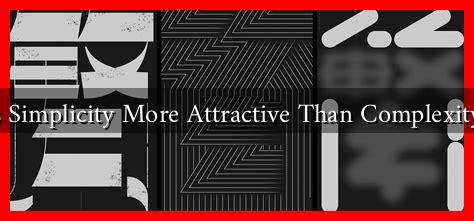-
Table of Contents
Is Simplicity More Attractive Than Complexity?
In a world increasingly characterized by information overload and rapid technological advancements, the debate between simplicity and complexity has gained significant traction. This article explores whether simplicity is indeed more attractive than complexity, examining various domains such as design, communication, and lifestyle choices.
The Allure of Simplicity
Simplicity often evokes feelings of clarity, ease, and accessibility. In various fields, simplicity has proven to be a powerful tool for engagement and effectiveness. Here are some reasons why simplicity is often preferred:
- Ease of Understanding: Simple concepts are easier to grasp. For instance, in education, students tend to perform better when information is presented in a straightforward manner.
- Enhanced User Experience: In design, simplicity leads to better user experiences. Websites like Google exemplify this with their minimalist design, which focuses on functionality over unnecessary embellishments.
- Faster Decision-Making: Simplicity aids in quicker decision-making. When options are presented clearly, individuals can make informed choices without feeling overwhelmed.
Case Studies in Simplicity
Several companies have successfully leveraged simplicity to enhance their brand appeal and customer satisfaction:
- Apple: Known for its sleek designs and user-friendly interfaces, Apple has built a loyal customer base by prioritizing simplicity in its products. The iPhone, for example, offers a straightforward user experience that appeals to a wide audience.
- Dropbox: The cloud storage service gained popularity due to its simple interface and easy file-sharing capabilities. By focusing on core functionalities, Dropbox has become a go-to solution for many users.
- Mailchimp: This email marketing platform emphasizes simplicity in its design and user experience, making it accessible for small businesses and individuals who may not have extensive technical knowledge.
The Complexity Factor
While simplicity has its advantages, complexity can also be attractive in certain contexts. Complexity often signifies depth, sophistication, and richness. Here are some scenarios where complexity may be preferred:
- Art and Literature: In creative fields, complexity can evoke deeper emotional responses. Works by authors like James Joyce or artists like Pablo Picasso challenge audiences to engage with intricate themes and ideas.
- Scientific Research: In science, complexity is often necessary to explain multifaceted phenomena. For example, the human brain’s intricacies require complex models to understand its functions fully.
- Luxury Brands: High-end brands often embrace complexity in their products and marketing strategies. The intricate craftsmanship of a luxury watch, for instance, can enhance its desirability and perceived value.
Statistics and Trends
Recent studies highlight the growing preference for simplicity in consumer behavior:
- A survey by the Nielsen Norman Group found that users are more likely to engage with websites that have a simple and clear layout.
- According to a report by McKinsey, companies that prioritize simplicity in their operations can achieve up to 20% higher productivity.
- Research from the University of California indicates that people are more likely to choose simpler options when faced with complex choices, demonstrating a cognitive bias towards simplicity.
Conclusion: Finding the Balance
In conclusion, while simplicity often holds a significant appeal due to its clarity and ease of use, complexity has its place in enriching experiences and conveying depth. The key takeaway is not to dismiss complexity entirely but to recognize when simplicity is more effective. In a world where attention spans are dwindling, simplicity can be a powerful tool for communication and engagement. However, in areas that require depth and nuance, complexity can provide the richness that simplicity cannot. Ultimately, the most attractive approach may lie in finding the right balance between the two.
For further reading on the impact of simplicity in design and communication, you can explore resources from Nielsen Norman Group.

